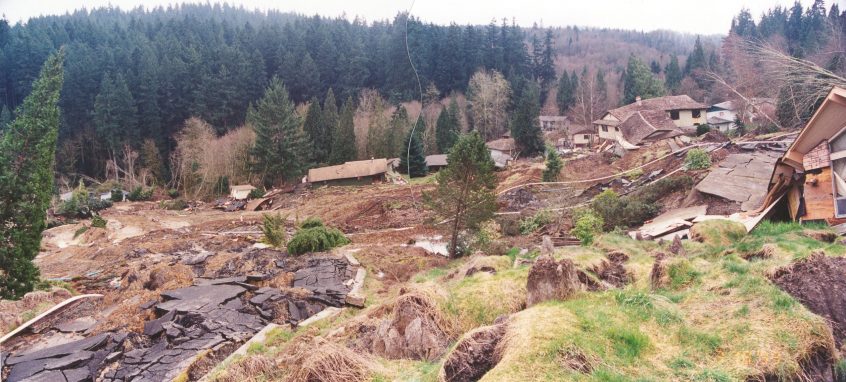Washington State University earlier this month released a study on landslides and timberland in the Olympic Peninsula. One of the critical points to make about this study (but which has been absent in WSU’s press release and the media coverage) is that the study involves only shallow landslides, not the deep-seated landslides like what occurred in Oso in 2014.
The Oso landslide was a reactivation of a glacial deep-seated landslide, which started 600 feet below the surface of the ground. These types of landslides do not occur on the Olympic Peninsula, the area covered in the WSU study.
Slow-moving, deep-seated landslides are those in which the bulk of the slide plane lies below the roots of forest trees. This depth can range from ten feet to several hundreds of feet. These slides tend to be a result of change in the geologic and hydrologic processes in the area of the landslide, such as seismic shaking or increased levels of groundwater. Once formed, deep-seated landslides can persist for a few years, even centuries.
Shallow-rapid landslides are debris-flow slides that occur within the forest rooting zone, generally less than 10 feet deep. They are typically initiated by intense rainfall and/or rapid snowmelt. Sudden saturation of the ground loosens the soil and triggers the slide. Shallow slides usually follow a long saturation period that is punctuated by an intense burst of precipitation over several hours or a few days. At some point, gravity overtakes the hillside and the muddy soil mass breaks loose.
In western Washington, high-intensity rain or rain-on-snow storms are the underlying cause of most shallow landslides. Occurring during the fall and winter months, these warm, persistent weather systems originate in the waters near Hawaii. As these warm, wet storms move into the state’s higher elevations, they bring heavy rainfall along with rapid snowmelt—the two main ingredients in forest landslides.
Go here for more information about Washington landslides.
